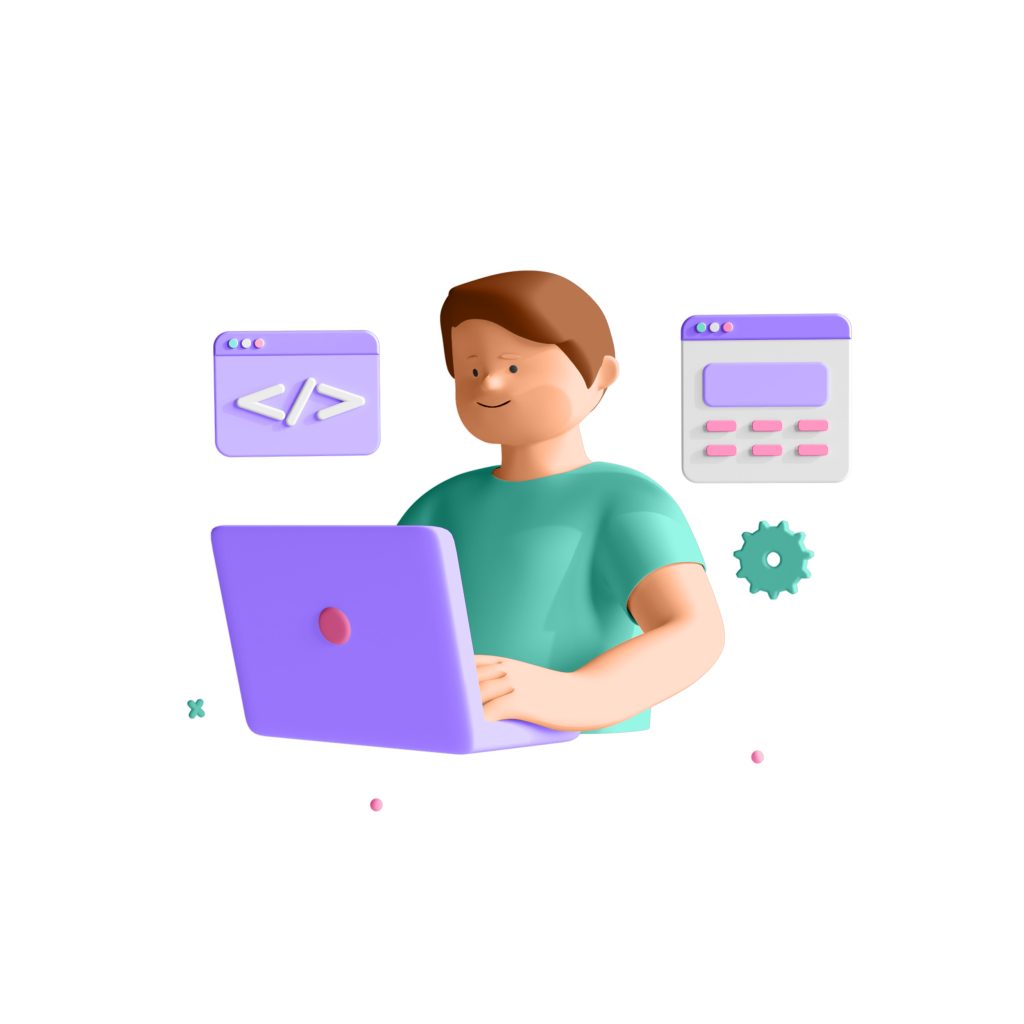If you are looking for your career in Tech, you probably asked yourself: “Which languages should I learn for full stack development?” With the moving of electricity online in 2025, full stack developers are more valuable than ever.
A full stack developer is a versatile engineer who can work on both frontnds (what users see) and backnd (argument and database that gives strength to an application). This ability to handle the entire development cycle makes them highly employable in startups, enterprises and freelancing markets.
Visit Us >>> https://www.impacteers.com
Why the demand is touching the sky here:
Each company-a small e-commerce shop requires a billion-dollar-friendly, user-friendly web apps to a billion-dollar’s fintech.
The AI-operated application, cloud computing and the rise of mobile-first design means that companies want developers who can quickly customize.
Full stack developers save the money of organizations by reducing the requirement of many experts.
However, the big question is: Which programming languages should you give priority to become a job-and-a-full stack developer? Let us break it step by step.
What is Full-stack Development?
Before diving into languages, let’s clarify what full stack development really means.
Frontend vs Backend Development
- Frontend (Client-Side): Everything users interact with directly, such as the layout, colors, buttons, and navigation of a website or app.
- Backend (Server-Side): The behind-the-scenes logic that processes requests, stores data, and communicates with databases and APIs.
A full stack developer is skilled in both.
The Role of a Full-stack Developer
A full stack developer is expected to:
- Design and build responsive interfaces.
- Create and manage databases.
- Develop server-side logic.
- Integrate APIs and third-party services.
- Deploy applications to the cloud (AWS, Azure, Google Cloud).
In other words, they can take a project from concept to deployment.

Why Learning the Right Languages Matters
You could spend years dabbling in dozens of programming languages, but if you want to become employable quickly, you need to focus on the languages that companies actually use in 2025.
Job Opportunities in 2025
- Frontend Developers → Companies hiring React, Angular, and Vue experts.
- Backend Developers → Demand for Node.js, Python, and Java continues to rise.
- Full Stack Engineers → High salaries in startups and MNCs.
Salary Expectations Worldwide
- U.S.: $95,000 – $130,000 per year (Glassdoor)
- India: ₹6 LPA – ₹20 LPA depending on skill and experience
- Europe: €50,000 – €90,000 per year
Freelancing and Startup Opportunities
- Freelance developers earn $25–$100/hour on platforms like Upwork.
- Entrepreneurs with full stack skills can build MVPs (Minimum Viable Products) without hiring expensive teams.
Essential Frontend Languages for Full-stack Development
Every aspiring full stack developer starts with the frontend because it’s the part of the application you can see and interact with immediately.
HTML – The Foundation of the Web
- Provides the structure of web pages.
- Easy to learn and the first language every web developer must know.
CSS – Styling and Layout Mastery
- Handles colors, layouts, animations, and responsive design.
- Tools like Flexbox and CSS Grid are essential.
- CSS frameworks (Bootstrap, Tailwind CSS) speed up development.
JavaScript – The Heart of Frontend
- Adds interactivity and dynamic behavior.
- Controls how pages respond to user actions.
- Runs natively in every browser.
DOM Manipulation and Interactivity
Understanding how to interact with the Document Object Model (DOM) is crucial for building modern apps.
ES6+ Features and Why They Matter
Modern JavaScript (ES6 and beyond) introduces features like:
- Arrow functions
- Template literals
- Async/await for handling asynchronous tasks
Frontend Frameworks and Libraries
React.js
- Developed by Facebook, now Meta.
- Dominates frontend hiring in 2025.
- Great for building scalable, component-based UIs.
Angular
- Backed by Google.
- Ideal for enterprise-grade applications.
Vue.js
- Lightweight and beginner-friendly.
- Popular for startups and smaller teams.
Key Backend Languages for Full-stack Development
While frontend development makes your applications visually appealing and interactive, backend languages power the core logic, data storage, and performance. Without backend, your app is just a static page.
Here are the top backend languages to consider in 2025:
JavaScript with Node.js
- Extends JavaScript to the server side.
- Huge advantage: You can use one language (JS) for both frontend and backend.
- Popular frameworks: Express.js, NestJS.
- Scalable for real-time apps like chat systems, video platforms, and multiplayer games.
Python with Django/Flask
- Known for clean, beginner-friendly syntax.
- Django → Full-featured framework with built-in admin panel.
- Flask → Lightweight, flexible microframework.
- Ideal for startups and developers interested in AI/ML integration.
Java with Spring Boot
- Trusted by enterprises for decades.
- Excellent for scalable and secure applications (finance, healthcare, e-commerce).
- Used by companies like Amazon, Netflix, and Uber.
C# with ASP.NET Core
- Great for developers in the Microsoft ecosystem.
- Powerful for building enterprise-grade web apps and APIs.
- Plays well with Azure cloud services.
PHP with Laravel
- Still powers over 70% of websites (thanks to WordPress).
- Laravel provides a modern, elegant syntax.
- Perfect for e-commerce, blogs, and CMS development.
Ruby with Ruby on Rails
- Once the darling of startups.
- Focuses on developer productivity (“convention over configuration”).
- Still relevant for small teams and MVPs.
Databases Every Full Stack Developer Should Know
A strong backend developer must also master databases to store and retrieve information efficiently.
SQL Databases (Relational)
- MySQL → Widely used, beginner-friendly.
- PostgreSQL → More advanced, great for large applications.
- Oracle Database → Enterprise-grade, complex but powerful.
Use SQL when:
- Data requires strict structure.
- Relationships between tables matter (e.g., e-commerce orders).
NoSQL Databases (Non-Relational)
- MongoDB → Popular for web apps with flexible schemas.
- Firebase → Real-time NoSQL database by Google.
Use NoSQL when:
- Handling unstructured or fast-changing data.
- You need speed and scalability.
Supporting Languages and Tools
Beyond core frontend/backend, there are additional languages and tools that speed up development and make you more employable.
TypeScript – Scalable JavaScript
- Superset of JavaScript with static typing.
- Reduces bugs in large projects.
- Widely used with React, Angular, and Node.js.
GraphQL – Alternative to REST APIs
- Query exactly the data you need, no over-fetching.
- Backed by Facebook.
- Great for mobile apps and data-heavy projects.
Bash/Shell Scripting
- Helps automate tasks like deployment, server setup, and testing.
Version Control (Git & GitHub)
- Git is essential for team collaboration.
- GitHub, GitLab, and Bitbucket host repositories.
Roadmap: Which Languages to Learn First (2025 Edition)
To avoid overwhelm, follow this step-by-step roadmap.
Step 1: Master the Frontend
- HTML → CSS → JavaScript
- Then move to a frontend framework (React recommended).
Step 2: Pick a Backend Language
- If you like one-language simplicity → Node.js.
- If you want AI/ML integration → Python.
- If aiming for enterprise roles → Java or C#.
Step 3: Learn Databases
- Start with MySQL or PostgreSQL.
- Add MongoDB for flexibility.
Step 4: Work on Projects
- Blog platform (HTML, CSS, JS + Node.js + MongoDB).
- E-commerce store (React + Django + PostgreSQL).
- Social media clone (React + Node.js + Firebase).
Step 5: Explore DevOps & Deployment
- Learn Docker, AWS, and CI/CD basics.
- Deploy apps on Vercel, Netlify, or Heroku.
How Long Does It Take to Learn Full-stack Development?
Your timeline depends on dedication, background, and resources.
- 3–4 Months: Beginner Level
- Learn HTML, CSS, JavaScript basics.
- Build simple static websites.
- Learn HTML, CSS, JavaScript basics.
- 6–12 Months: Job-Ready Developer
- Master React + Node.js/Python.
- Understand databases and Git.
- Deploy small apps.
- Master React + Node.js/Python.
- 1–2 Years: Advanced Full Stack Expertise
- Learn multiple backends.
- Master DevOps and cloud deployment.
- Lead projects or freelance at scale.
- Learn multiple backends.
Career Paths After Learning Full-stack Development
Once you’re confident with your stack, here are career roles:
- Frontend Developer → Focus on UI/UX and design.
- Backend Developer → Specialize in databases and server-side logic.
- Full Stack Engineer → Handle entire app lifecycle.
- DevOps Engineer → Oversee deployment and scaling.
- Freelance Web Developer → Build projects for global clients.
Common Mistakes to Avoid While Learning Full Stack Languages
Many beginners slow their progress because of these mistakes:
- Learning Too Many Languages at Once → Stick to one frontend + one backend first.
- Ignoring Core Fundamentals → Without strong JavaScript and SQL basics, frameworks won’t help.
- Skipping Projects and Only Studying Theory → Employers want proof of work.
- Not Keeping Up with Industry Trends → AI tools, frameworks, and APIs evolve quickly.
How Employers Evaluate Full-Stack Developers
In 2025, employers look for proof of applied skills, not just certifications.
Skills Recruiters Look For
- Can you build and deploy a working app?
- Do you know how to handle real-world errors?
- Are you familiar with APIs, security, and scalability?
Building a Strong Portfolio Full-stack Development
- Showcase 3–5 projects on GitHub.
- Write blogs about your learning process.
- Contribute to open-source projects.
Best Resources to Learn Full-stack Development
Free Resources
- FreeCodeCamp.org – Hands-on projects.
- MDN Web Docs – Official documentation for web standards.
- YouTube (Traversy Media, The Net Ninja).
Full-stack Development: Paid Courses and Bootcamps
- Udemy (The Complete Web Developer Bootcamp by Colt Steele).
- Coursera (Full Stack Development Specializations).
- Impacteers Bootcamps – Job-ready certifications.
Communities and Forums
- Reddit: r/webdev.
- Stack Overflow – Ask questions, solve bugs.
- LinkedIn & Discord groups.
Conclusion
So, which languages should you learn for full stack development?
Start with HTML, CSS, and JavaScript for frontend.
Add React.js (or Angular/Vue) for modern UI.
Pick a backend → Node.js (fastest), Python (clean syntax), or Java (enterprise).
Learn SQL (MySQL/PostgreSQL) + MongoDB for databases.
Add supporting tools like TypeScript, Git, Docker, and GraphQL as you grow.
By following this roadmap, you can become job-ready in 6–12 months and start a high-paying career as a full stack developer in 2025.
The real secret? Consistency, practice, and projects. Build, break, and rebuild — that’s how you master full stack development.
Learn More >>> https://blog.impacteers.com
About Us >>> https://www.impacteers.com
FAQs on Full-stack Development Languages
Q1: Which language should I learn first for full stack?
Start with JavaScript, since it covers both frontend and backend (Node.js).
Q2: Do I need to learn all backend languages?
No. Learn one well (Node.js or Python) before exploring others.
Q3: Is Python or JavaScript better for beginners?
Python is easier for syntax, but JavaScript makes you job-ready faster.
Q4: Do full stack developers need to know Java?
Not necessarily. But learning Java is great for enterprise-level jobs.
Q5: Do I need to know mobile development for full stack?
Not required, but React Native or Flutter can be a bonus.Q6: Can I become a full stack developer without a CS degree?
Absolutely. Employers care more about projects and portfolios than degrees.




Post Comment